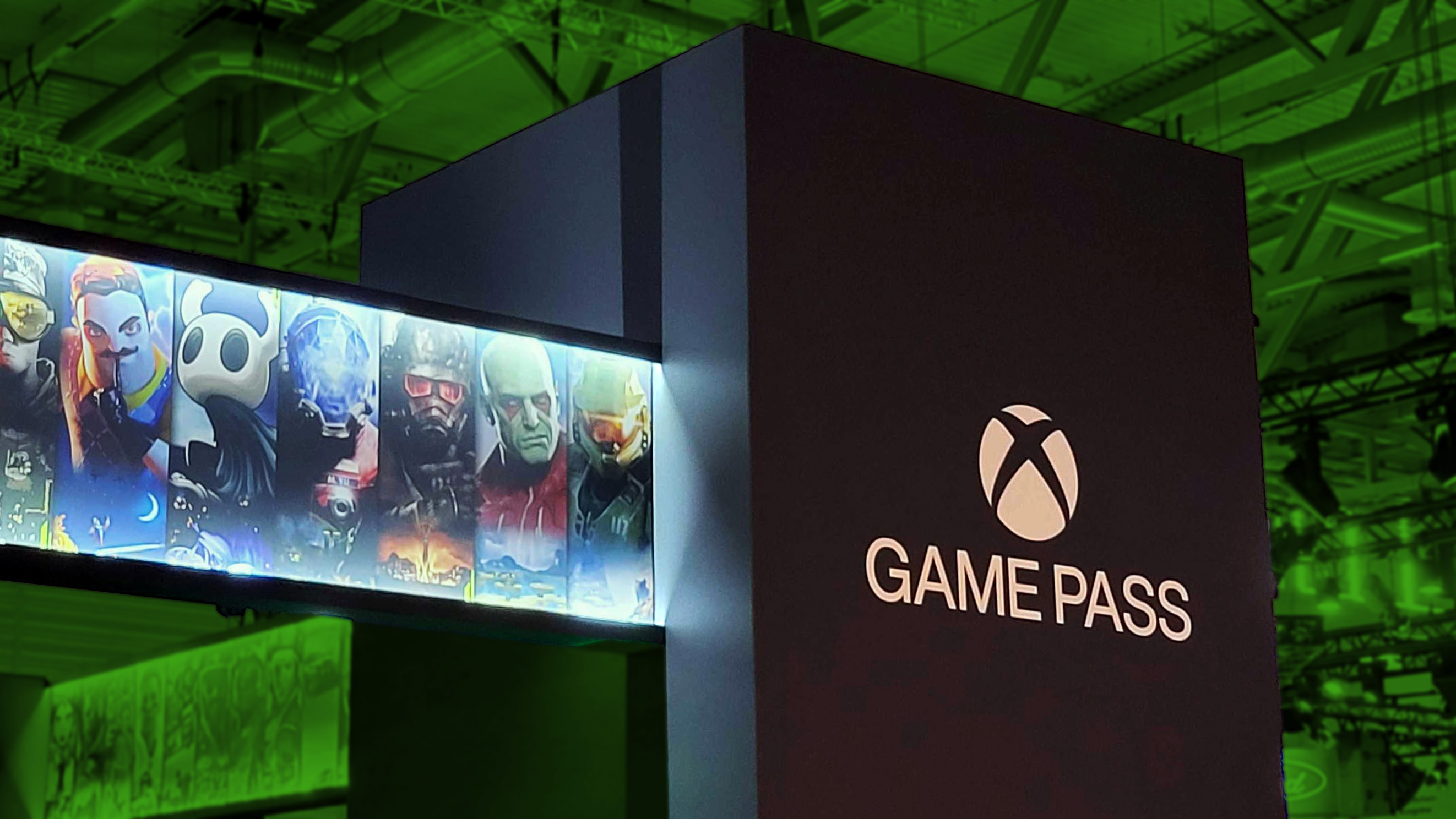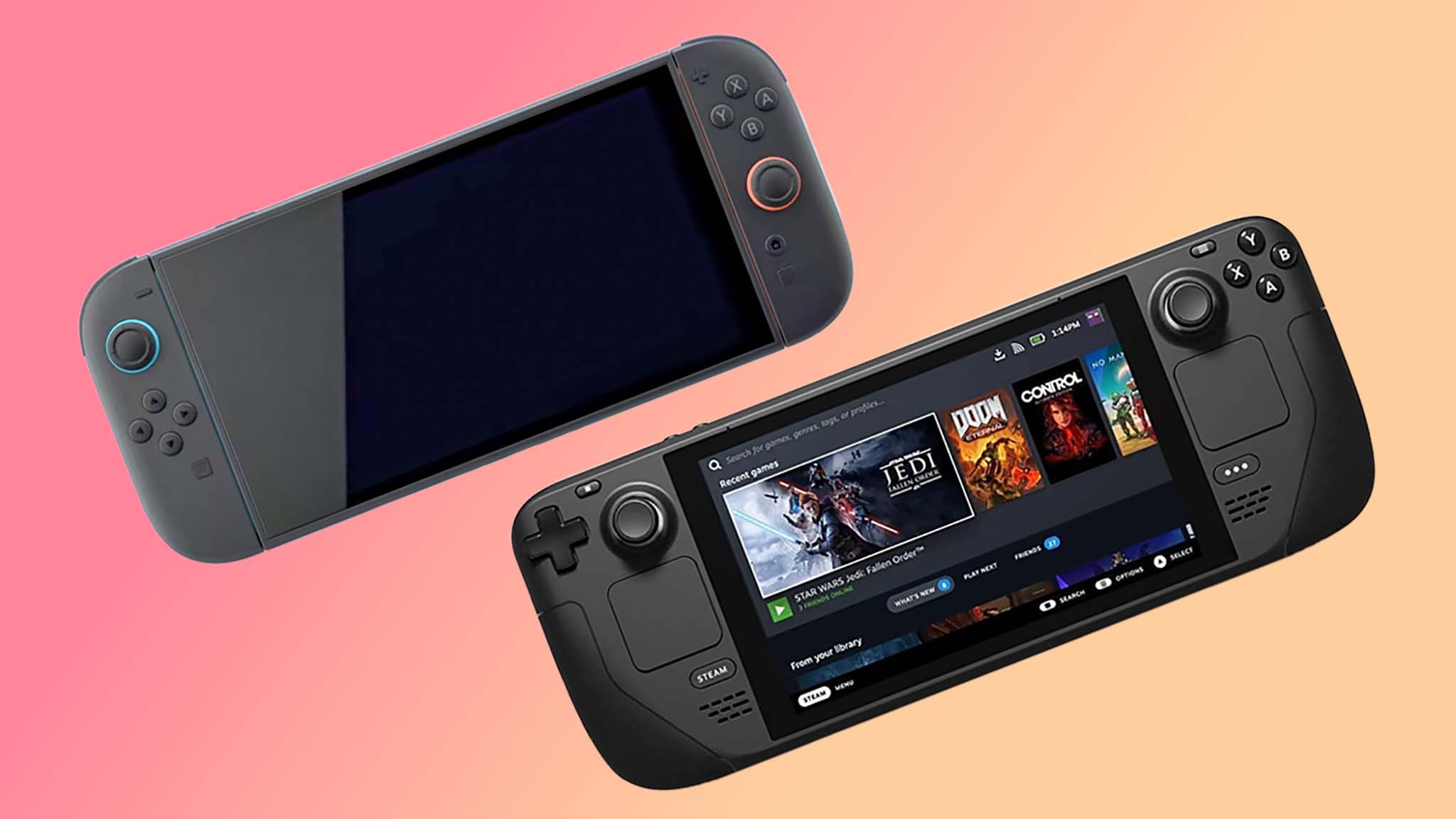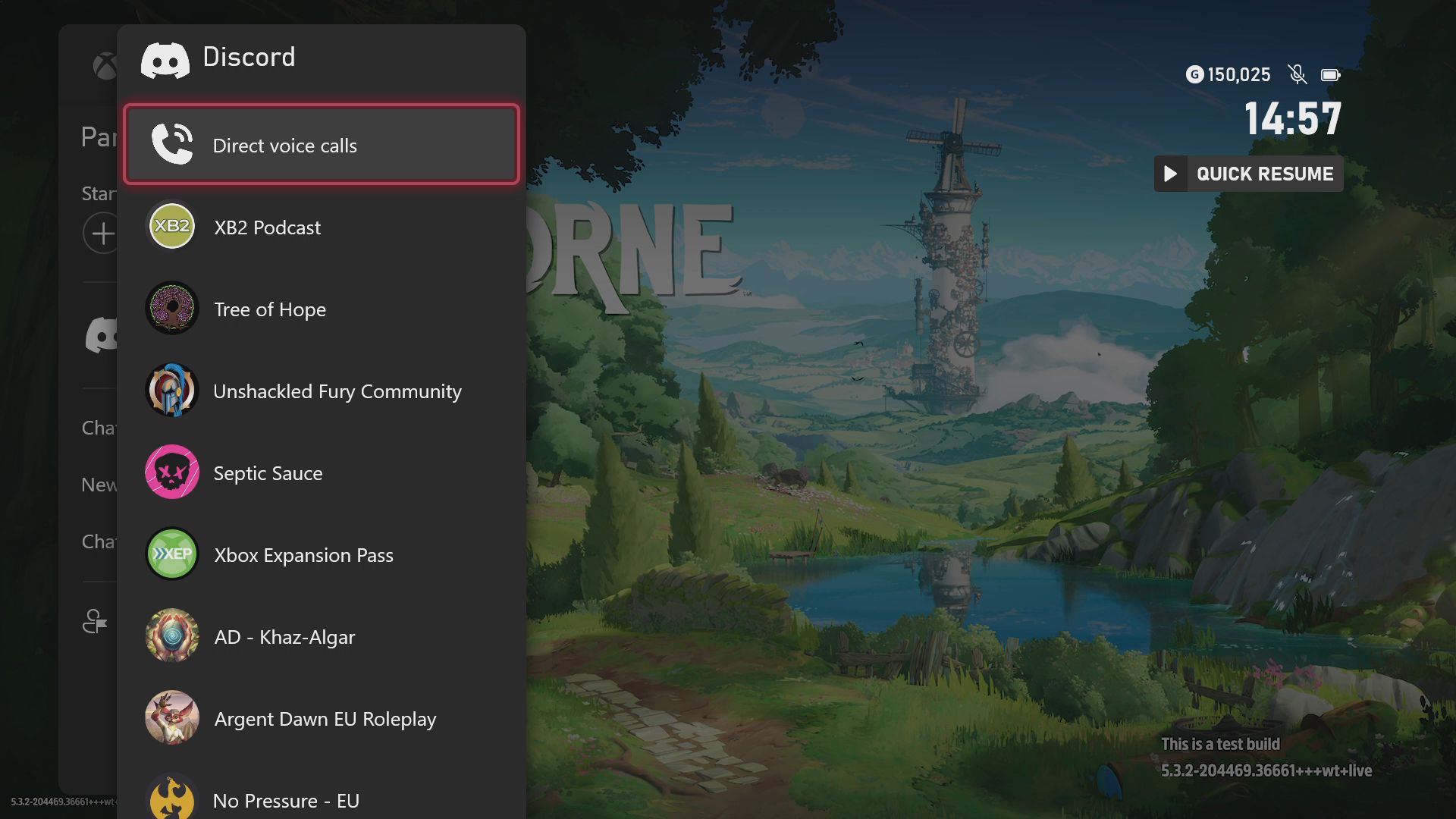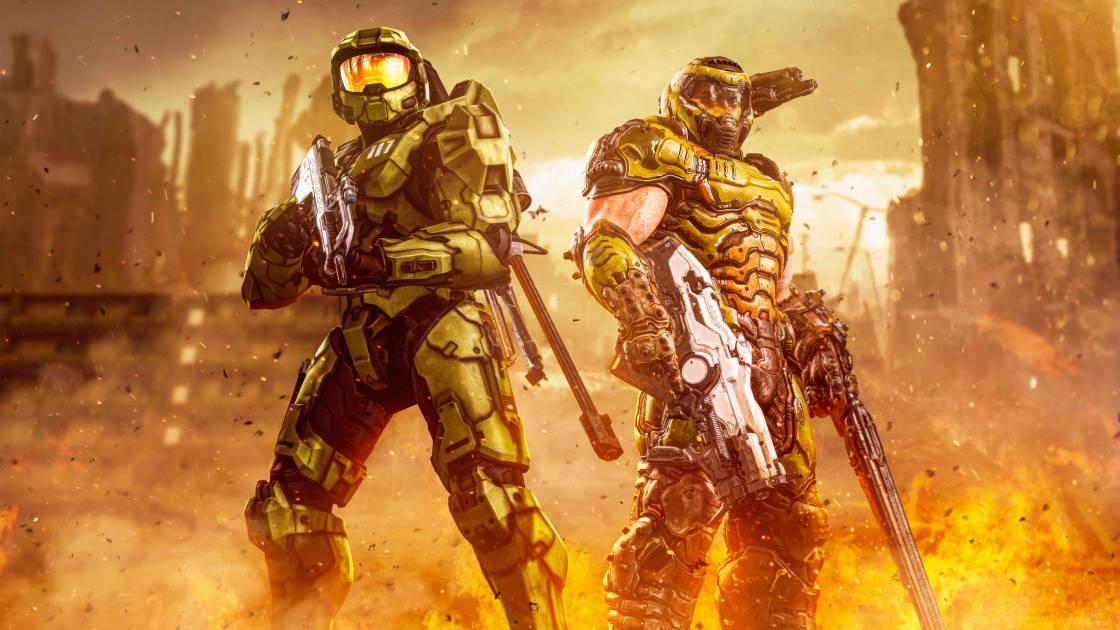Out of an abundance of morbid curiosity, I found myself watching the Nintendo Switch 2 live stream yesterday, despite being a somewhat lapsed Nintendo fan.
As a kid growing up in the 90s, I was among many of my British peers who were priced out of the market by Nintendo’s expensive games and consoles. Sega’s offering was generally more affordable, accessible, and had an impressive slate of exclusive content in its own right (Gunstar Heroes forever). As such, I have very little nostalgia for Nintendo this side of Pokémon and Metroid, but poor management of the modern games has diminished those aspects of Nintendo for me as well.
In any case, I should preface this by saying this is just my opinion, as someone who isn’t compelled by the latest iteration of Mario Kart or Kirby.
My backlog on Xbox and Steam is vast enough that I’ll never be short of things to play — but I was curious how Nintendo might push innovation in the handheld form factor, particularly given how Microsoft is exploring its own Xbox handheld both internally, and with a partner via Project Kennan.
What I felt after watching the Nintendo Direct was … well, a tad bemused, really. A device that might have been impressive performance-wise a few years ago, with “new” features that are available today on competing products, while also pushing the industry to adopt up to $90 games as standard, it simply reminded me how much I take my Xbox for granted.
$90 games are going to become the norm… not for me!
Perhaps the biggest controversy of the Nintendo Switch 2 argument is the revelation that Nintendo’s flagship games will retail for $90 on physical cards, and $80 digitally. That’s a huge mark up from the $70 standard today, and will push games over $100 in some territories due to currency conversions, tariffs, and whatever else.
As someone with no nostalgia about most of Nintendo’s franchises, there’s not a universe that exists where I feel Kirby, Mario Kart, Pokémon, Zelda, or whatever else is worth $90.
I’ve paid over $90 for Collector’s Editions for the few franchises I truly adore, like Diablo, World of Warcraft, The Witcher, and the like, but for the standard version, with no additional content or merch?
For the price of three flagship Nintendo games, you could buy an entire year of Xbox Game Pass Ultimate.
XGPU has every single recent Microsoft property available, as well as Xbox Cloud Gaming access, premium extras in free-to-play games, PC Game Pass included, hundreds of third-party games, and much, much more.
saying that games were $100 in the 90s isn’t a reason to justify prices steadily rising in 2025, especially when our salaries aren’t rising as wellGaming shouldn’t be an elitist hobby I’ll argue value for consumers every timeApril 2, 2025
Steam is also consumer-first with its approach to pricing, with notoriously generous sales events, and a generally lower standard cost for premium games — although some publishers have been making an effort to match that.
Nintendo games are notorious for almost never going on sale, too. But hey, the market dictates, and many don’t seem to care about that, but global purchasing power isn’t exactly going up right now.
Beyond the point-of-purchase price, every modern Microsoft game comes with Xbox Play Anywhere as standard, meaning that you buy it once, and get a version playable across both console and PC. More and more, those games are also being greenlit on Xbox Cloud Gaming as well.
You get so much more for your $70 premium purchase of an Xbox game than you do of an $80 or $90 Nintendo Switch 2 game … although let’s be real, if Nintendo makes this the standard entry price for premium games, it’s only a matter of time before Xbox, PlayStation, and other publishers follow suit.
In that world, Xbox and PC Game Pass become even more attractive options, though, reminding me how much value we’re actually getting. It’s easy to take that for granted.
Yesterday’s tech, today!
The Nintendo Switch 2 is going to be priced similarly to an Xbox Series X, trading performance for portability.
The $499 bundle comes with Mario Kart World, and will most likely be the stock that most retailers carry — there will be a $449 option without a game, but as of writing, the Xbox Series X 1TB version is currently $439 at Amazon, making it even cheaper.
The Xbox Series S is even cheaper, at $284 on Amazon, and will run most games comparably to the Nintendo Switch 2.
It won’t be long until we start seeing commentators who decried 30 FPS in games like Cyberpunk 2077 and Elden Ring on the Xbox Series S as being “totally fine” on the Nintendo Switch 2. But sure, you can’t take your Xbox Series X or S with you to play on a plane or on a train, so perhaps it’s better to compare the Nintendo Switch 2 to a Steam Deck or ASUS ROG Ally when speaking raw form factor.
The Steam Deck probably isn’t as powerful as the Nintendo Switch 2, particularly so when docked, but the ASUS ROG Ally with the AMD Z1 Extreme is likely at least comparable.
We won’t know for sure how powerful and comparable these devices are in real-world tests until the Nintendo Switch 2 launches, but it’s worth noting the ASUS ROG Ally is almost two years old at this point, and the Steam Deck is three years old.
The ASUS ROG Ally is $499 on Amazon as of writing, and comes with the full force of Steam, Xbox Game Pass, and third-party PC launchers for things like Genshin Impact.
It has the full power of Windows 11, with thousands of compatible accessories, mods for games, and broad configurability. The Steam Deck offers similar, and comes in far cheaper than the Nintendo Switch 2 as well.
It’s true that the Nintendo interface is going to be far more usable than Windows on the ROG Ally, though, and that’s something Microsoft is working hard to rectify. But at least for now, Nintendo has a usability edge for youngsters and older gamers who aren’t necessarily interested in dealing with Windows or SteamOS‘ idiosyncrasies — all packed into one portable, TV dockable console-style device.
For all of its usability, the Nintendo Switch operating system is notoriously “no frills,” I would say. Things like cloud saves and back-ups didn’t launch with the original system, and even then, it wasn’t for every game.
I seriously take for granted Xbox and Steam’s free, blanket cloud saves system when I use other devices. I also take for granted Xbox’s easy social features.
Xbox’s big innovation, “party chat,” from yesteryear, is finally now available on the Nintendo Switch 2, complete with an optional camera feature with auto green screen. Xbox delivered this with the Xbox One and Kinect back in 2013 with Skype integration, of course. The Xbox Series X|S also has full Discord integration, which offers the same feature set, albeit without direct game integrations.
When taken separately, the Nintendo Switch 2 is likely not as open or versatile as a ROG Ally and not as powerful or an Xbox Series X or even S — but it has packed portability and usability into a single package more elegantly than most competitors out there.
RELATED: The Nintendo Switch 2 has game sharing and a camera, sound familar?
For sure, Nintendo deserves a huge amount of credit for the innovations of the Nintendo Switch, which has driven it to tens of millions in sales and has become one of the most popular video game consoles of all time.
But, in 2025, there are so many more, often better, more affordable options that will offer at least a near-identical gaming experience — and oftentimes, a better experience.
But, is that enough?
But … it’s true that Xbox has no fun “exclusive” content argument now.
The thing is, though, consumers don’t necessarily buy technology because of what’s “best on paper,” they buy what feels good to them.
Nintendo has curated a level of consistency that few other game publishers can pray to muster, cashing in compound nostalgia interest that has built up over decades. There’s a fun factor to Nintendo’s products and games that is hard to put into words.
Xbox had Skype with camera integration back in 2013, but they never took that extra step to make it “fun,” like Nintendo has, integrating it directly into games. And that’s before we even really talk about the games — depending on your individual preferences, that might make the “premium” price tag more than worth it.
My Xbox Two Podcast co-host says it best, “value isn’t sexy,” and therein lies the truth about Xbox Game Pass’ proposition in the wider market. The install base for Game Pass seems to have stalled somewhere in the mid 30 millions, which isn’t bad by any means. But, given that it cannibalizes $70 retail sales of games like Call of Duty, its “viability” is often called into question.
REMINDER – Hollow Knight: Silksong arrives day one on Game PassApril 2, 2025
As Xbox’s social accounts remind users that some of those Nintendo Switch 2 games are heading into Xbox Game Pass, it kind of reminds us that Game Pass doesn’t seem to be the big draw that Xbox previously hoped it would be.
If Xbox’s declining hardware sales are anything to speak of, users seem content to stay on PlayStation 5 and other competing platforms over the “value” being offered by the cheaper Xbox Series S, and Xbox Game Pass $20 subscription model.
Time is finite at the end of the day, and perhaps having access to hundreds of games is a tad overwhelming for aging variety gamers who now have kids, careers, and an increased desire to simply collapse after work instead of engage with a video game.
Furthermore, a lot of the “exclusive” content that Xbox offers through Game Pass is increasingly available on other platforms.
There are strong rumors that Halo and Gears of War are coming to PlayStation and most likely the Nintendo Switch 2 as well, down the line. Forza Horizon is no longer exclusive to Xbox either.
Xbox’s iconic franchise associations have been sacrificed to help the business keep pace, following years of poor business decisions from the top down. Nintendo would never make such concessions, which is why it’s most likely going to get away with selling games for $90 and selling a very iterative device for $450.
You’re not just paying for the console, you’re paying for the “fun,” the identity, and the “feeling” Nintendo offers. Microsoft has never understood that, and probably never will. I’ll forgive them for it, but the wider market speaks for itself.








